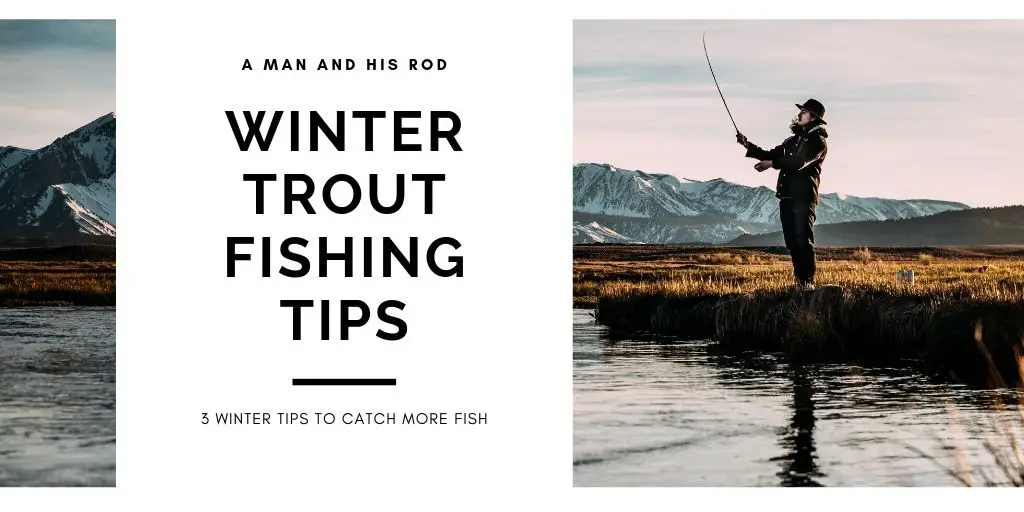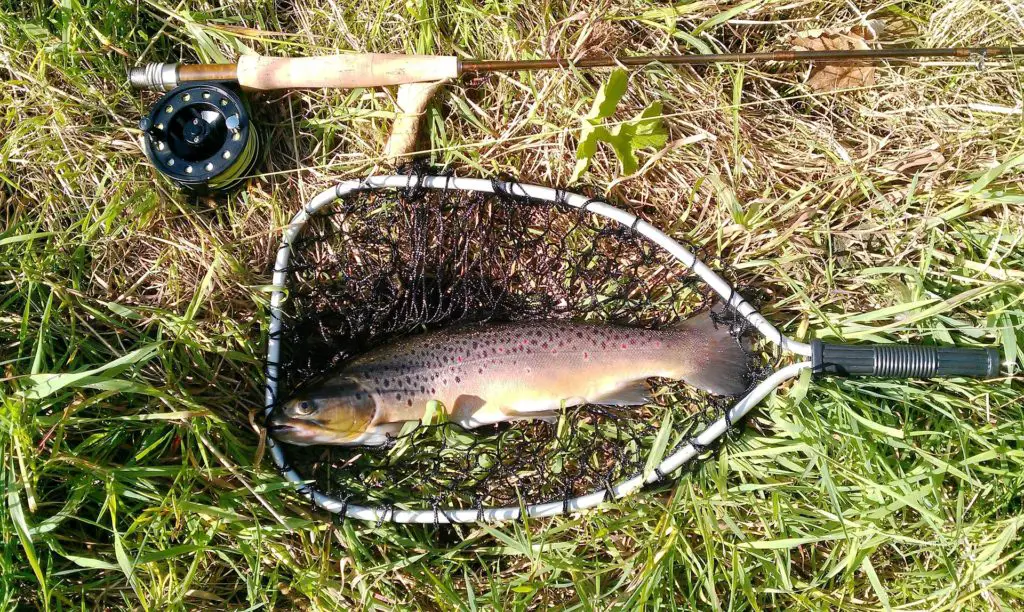Whether it was the local lake, or farm pond, most of us got our fishing start on stillwater. As we got older, we seemed to slowly move away from our roots and found ourselves entranced by big rivers filled with strong currents and even stronger fish. However, I think it’s time we should make the pilgrimage back to fishing for trout in lakes. I know it’s probably been a while, so below we have the 8 stillwater fly fishing tips and tactics.
If you have not already read Stillwater Fly Fishing Techniques, you may want to do so before continuing.
1. Countdown Method
When throwing wet flies, the best way to find the depth of your targeted fish is to use the countdown method. Once your fly hits the water you will begin a countdown in increments of 5.
For example, after your fly lands begin a countdown from 5 and then retrieve and re cast once you’ve hit zero. The next cast will use a longer countdown to 10, and then the next will be 15, etc.
After each cast continue to raise the number until you hit 30. After that it might be time to hit a new spot or change your fly.
2. Fan Casting Stillwater
When fishing a big body of water like a lake it’s important to cast all around you and not just at a few key areas, like you would a river. This is where fan casting comes in.
When you’ve chosen your spot, you will want to place your casts as far left as they will go and then slowly work your back to the right with each recast. This ensures you cover all the water around you.
Use the countdown method while fan casting for extra water coverage. Once you’ve fan casted an area, move on and do the same thing at your new spot.
3. Lakes are not still
I know that this seems counter intuitive to what we’re writing about, but it’s actually true. While it may not have the same current as a river or stream, the water on a lake is moving.
The wind is constantly moving the water, which means the food is moving as well. The way trout will face upstream in a river, they do the same in a lake except they are facing the wind.
When looking for a spot to fish, check out areas where water is being driven. A few key spots are points, islands, or any obstacle the wind might be hitting.
4. Keep an eye on water temperature
Water temperature silently influences everything that is happening in the lake, what insects are hatching and how active the fish are.
However, the most important reason for knowing the temperature is being aware what insects are hatching. You’ll find that most emergences happen when the surface temperature is between 50-65 degrees.
At this temperature be prepared to see several different species emerging at the same time. Seeing this can confuse an angler on what to throw, so this leads us to point 5.
5. Fish more than one fly
If you see multiple hatches occurring and you’re not quite sure what to do, then throw on 2-3 different flies.
Put one fly on the point and then add one or two droppers. This increases your chances of hooking up by putting multiple flies in the water and allows you to know exactly what the fish is taking.
Be careful when doing this because some areas do not allow multiple flies on one line.
6. Beware the Birds
Something that saltwater anglers have known about forever is to watch for the birds, because that’s where you’ll find the baitfish.
This is a similar scenario for fly fisherman, but instead of baitfish, it’s insects. Birds, just like fish, are constantly looking for food and if they see emerging insects they will be going after them.
Boat anglers should fully utilize this as they can go anywhere on the lake. It’s tougher for shore fisherman, but it’s still something to keep an eye on.
7. Move around
Whether in a boat or fishing from the shore it’s best to keep moving throughout the day. If you’ve worked your fan cast and countdown method appropriately and nothing has bitten, then its time to walk away and try a new spot. Of course, the exception to this rule is if you’re actually catching fish.
8. Embrace the pressure
Due to the number of fishermen on our local lakes, stillwater fish are notoriously spooky. When you’re out there its best to embrace that pressure and make it work for you.
You should be doing something that sets you apart from any other Joe Schmo angler. For example, when throwing a streamer don’t just strip in one foot at a time. You need to vary it.
Try a super slow retrieve followed by burning it in. Give it a couple of small strips followed by one big strip. This is where you get to be creative and through trial and error, you’ll figure out exactly what the fish are looking for.
Conclusion – 8 Stillwater Fly Fishing Tips and Tactics
Use these 8 stillwater fly fishing tips to your advantage next time your on the water. Implementing these tips and tactics will increase your chances of some epic results.
I would love to hear what your stillwater fly fishing tips and tactics are in the comments below.
If you enjoyed this article click one of the social media icons located just to the left or below this post. If you would like to subscribe to get notifications of new posts you can do so at the top of the page.


